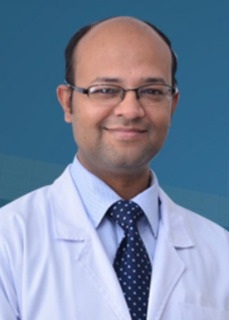Timely Surgical Intervention is Key to Stroke Recovery

Dr Sumit Goyal Neurosurgeon and Group Director Neurointerventionist, Yatharth Hospital, Greater Noida
Stroke is a leading cause of death and disability worldwide, and its prevalence is increasing in India, particularly with the rise in risk factors like hypertension, diabetes, and sedentary lifestyles. When a stroke occurs, every second counts.
Immediate medical intervention can make the difference between a full recovery and long-term disability. While medical management is crucial, in some cases, advanced treatment options like neurosurgery become necessary to effectively address the condition and improve the patient’s chances of recovery.
The Role of Neurosurgery in Stroke Treatment
Neurosurgery plays a critical role in the management of certain types of strokes. In ischemic strokes, where a blood clot obstructs the flow of blood to the brain, surgical intervention such as thrombectomy can be used to remove the clot and restore blood flow. This procedure must be performed within a few hours of the onset of stroke symptoms to maximize its effectiveness.
In cases of haemorrhagic stroke, surgical intervention is often required to remove blood accumulated within the brain, reducing pressure and preventing further injury. Aneurysm coiling, a minimally invasive procedure, is frequently used to treat brain aneurysms by stabilizing them, reducing the risk of rupture. Additionally, neurosurgeons may repair damaged blood vessels to stop any further bleeding, decreasing the chance of subsequent strokes.
Minimizing Complications and Enhancing Recovery
In addition to emergency neurosurgery, the management of stroke patients often involves a multidisciplinary approach that includes neurocritical care, rehabilitation, and long-term follow-up. Preventing complications such as infections, blood clots, or further strokes is crucial. Post-surgery, patients require intensive care to monitor brain function, maintain adequate oxygen levels, and ensure proper nutrition.
Rehabilitation also plays a significant role in a patient’s recovery. Physiotherapy, speech therapy, and occupational therapy can help stroke survivors regain lost functions, improve mobility, and manage daily activities independently.
Prevention and Awareness
The best approach to stroke management is prevention. Lifestyle changes such as maintaining a healthy diet, exercising regularly, controlling blood pressure, and avoiding smoking can significantly reduce the risk of stroke. Regular health check-ups and early detection of risk factors like high cholesterol or atrial fibrillation can also help prevent stroke.
In regions with high stroke prevalence, public awareness campaigns are essential to educate the population about stroke symptoms, risk factors, and the importance of timely medical intervention. The quicker the treatment, the better the chances of minimizing brain damage and achieving a successful recovery.
Road to Recovery
Neurosurgery, in combination with other medical and rehabilitation treatments, is instrumental in improving outcomes for stroke patients. The ability to restore blood flow, remove blood clots, and relieve pressure on the brain provides patients with a higher chance of surviving the stroke and regaining lost functions.
